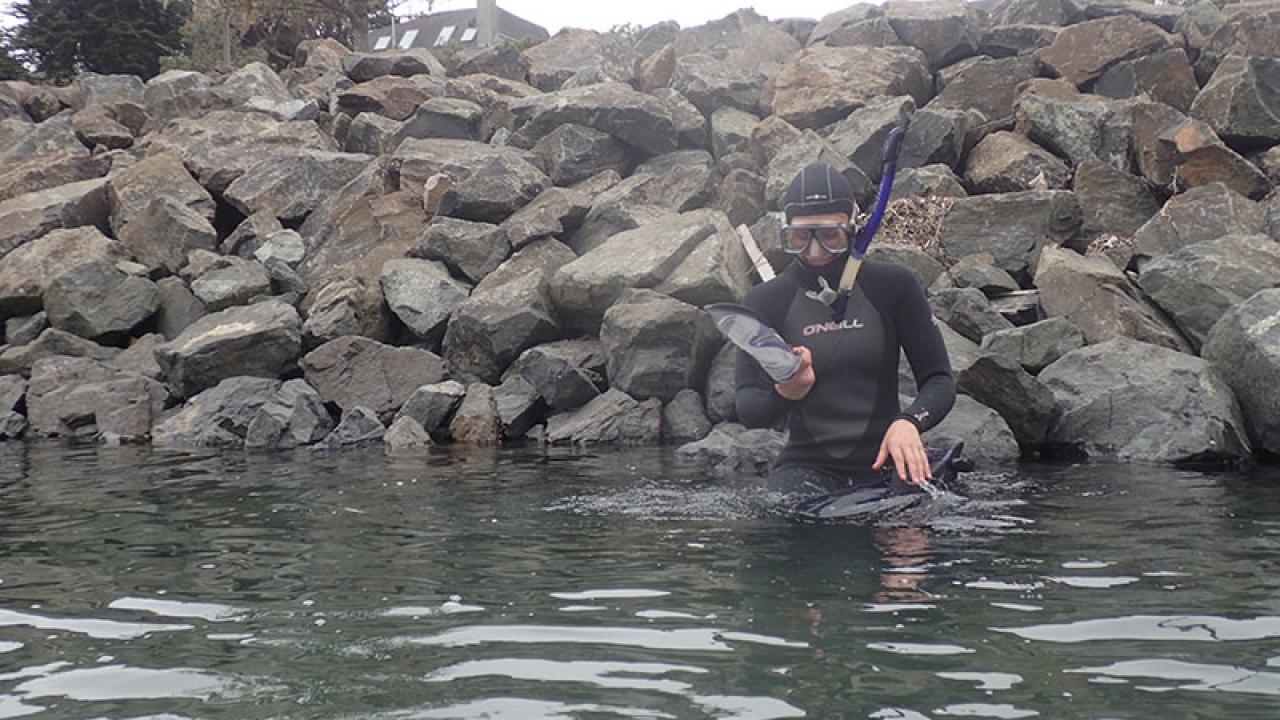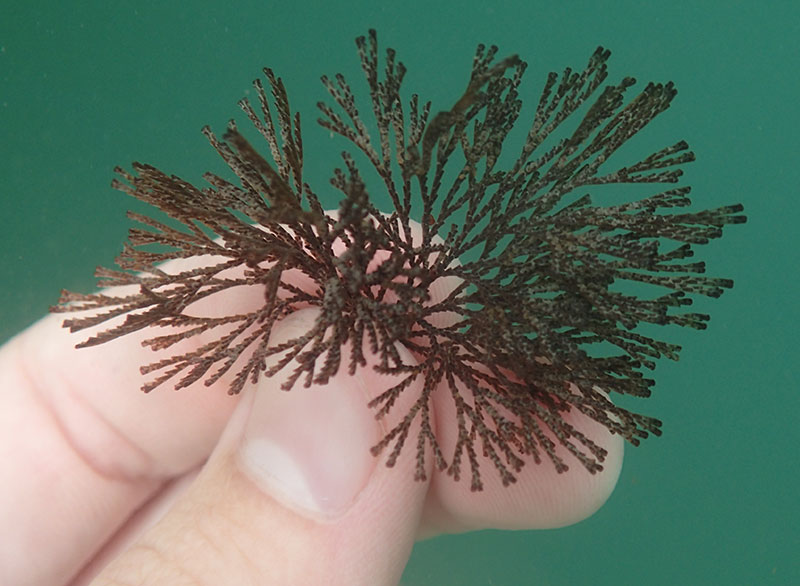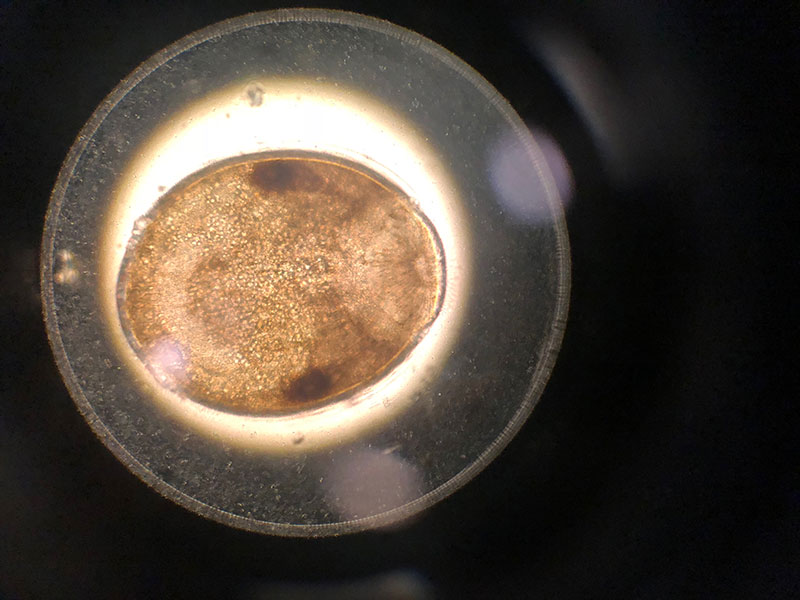
The Hunt for Bryozoans
“Oh sweet Jesus!” The words are out of my mouth before I can stop myself, as fast as the cold water making it through the zipper of my wetsuit. I never seem to remember how cold the water is here in Bodega Bay until I’m in it. “Ah! Alright, let’s go!”
We wade the rest of the way into the water and put on our fins and prepare our snorkels. Yes marine scientists do get to snorkel for work sometimes, but no we are not in bikinis wading into tropical turquoise waters on our way to swim with dolphins. We’re here on this cloudy day in a boat marina scoping out the invertebrates that live on the docks and pilings in the harbor.
I’m on the hunt for bryozoans. Unless you’ve taken an invertebrate zoology class, you may never have heard of them. The species I am hoping to study, Bugula neritina is probably one of the most innocuous, uncharismatic animals you will ever encounter. They resemble a very lackluster clump of algae or a sad tumbleweed.
Believe me, I wasn’t sold the first time I heard about them either. But it turns out they are perfect for the kinds of questions I want to study. I’m interested in how the experiences of previous generations affect the current one. For example, if your mother was stressed by something in her life, can that affect how you yourself handle that same stress in your own life? More and more evidence seems to say that the answer is yes. This type of parental effect is often called transgenerational plasticity. “Trans-” because the effects are across multiple generations and “plasticity” meaning an organism’s ability to change. It allows organisms to adapt more quickly to their environment because they are not just relying on their genes or their own current experiences. This ability may be important in our rapidly changing world and has been shown in a wide range of taxa from plants to humans.
These bryozoans are weedy and grow quickly, have lots of babies, and are all over the docks and easy to collect. They’re also stuck in place so being able to adapt to a changing environment may be especially important. If temperatures rise, the pH sinks, or heavy metals are introduced into the harbor they can’t just swim away and find a better home. Can this type of plasticity help them cope with human created stressors? I’m very curious to find out.
Marine science is filled with these kind of unsung heroes, the organisms that allow us to ask interesting and important questions. You’re probably not going to see the effects of climate change on multiple generations of whales for example, but you might be able to with an unassuming but still pretty amazing marine invertebrate. Back at the docks we slowly climb out of the water. The trip has been a success; I found my bryozoans! It means I can start my experiments and begin to tell their story.



